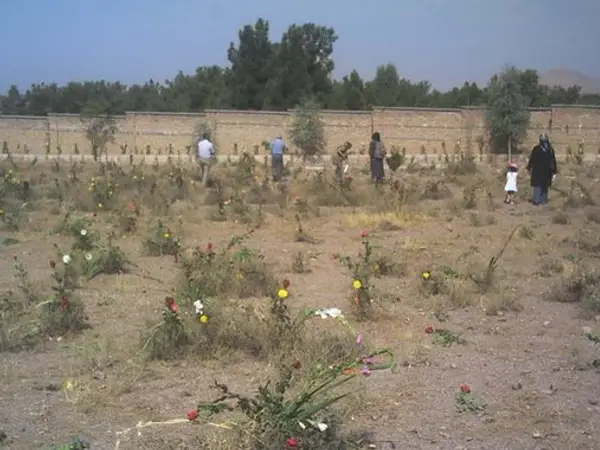Iranian authorities are putting up high concrete walls around a cemetery near the capital where hundreds of victims of the 1988 prison executions are buried.
A new video posted on social mediaon Friday shows that tall concrete walls and poles for surveillance cameras are being erected around Khavaran cemetery, southeast of Tehran.
In a statement Friday, Justice-Seekers of Khavaran, a group of families of the victims and survivors of the prison purges, called on authorities to immediately stop more barriers to the resting place of their loved ones, and said they will launch an international campaign to make their voices heard by the international community.
In 1988, an unknown number of executed prisoners were buried in mass and individual graves at Khavaran which had previously been used to bury non-Muslims including Armenian Christians, Hindus and members of the persecuted Baha’i faith.
Authorities have never disclosed the number of those executed in prisons across the country from August 1988 until February 1989. Between 4,500 and 10,000 prisoners are believed to have been killed. Almost all victims were serving prison terms when clerical rulers decided to eliminate them.
Most victims were members or supporters of the Mujahedin-e Khalq Organization (MEK) as well as Marxists and other members of other leftists groups.
Justice for Iran, a London-based rights organization, in a tweet on Saturday said restricting access to the site of mass graves allows the Islamic Republic to further destroy evidence of the crimes it has committed. Mass graves are crime scenes and must remain intact until they can be independently investigated to identify the remains of the victims and the sequence of events when the crimes happened, the rights organization said.
In 2018 Justice for Iran published a report on mass graves of political prisoners in various Iranian cities including Khavaran. According to the report, authorities have on numerous occasions tried to destroy evidence of the burials at Khavaran and other places, including by bulldozing the sites.
The unmarked graves in Khavaran were discovered soon after the executions by victims’ relatives who were never told where their loved ones had been buried. At Khavaran they found limbs and partially buried bodies of victims in shallow unmarked mass graves.
The news about the graves soon spread among those in search of the graves of their loved ones and the cemetery itself took the place of graves never found as many who regularly go there have no evidence of their loved one is buried there. Victims’ families call the cemetery “The Flower Garden of Khavaran”.
Despite constant harassment and persecution, Mothers of Khavaran, a group of mothers and families of victims, have fought for over three decades to bring the authorities to reveal the burial places of their loved ones.
In April 2021, members of the prosecuted Baha’i religious community in Tehran were ordered to bury their dead on the site of a mass grave at Khavaran although they said their own allocated site still had plenty of burial space. They were also told that the remains of the executed prisoners had been exhumed.
"This is the latest in a series of criminal attempts over the years by Iran's authorities to destroy mass grave sites of the 1988 prison massacres in a bid to eliminate crucial evidence of crimes against humanity," said Amnesty International's deputy Middle East director, Diana Eltahawy following the Baha’i community’s revelation.
